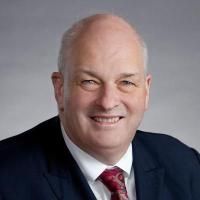Trajectory of Improvement in Myelopathic Symptoms From 3 to 12 Months Following Surgery for Degenerative Cervical Myelopathy.
Date
2020-06
Journal Title
Journal ISSN
Volume Title
Repository Usage Stats
views
downloads
Citation Stats
Attention Stats
Abstract
Background
Degenerative cervical myelopathy (DCM) is a progressive disease resulting from cervical cord compression. The modified Japanese Orthopaedic Association (mJOA) is commonly used to grade myelopathic symptoms, but its persistent postoperative improvement has not been previously explored.Objective
To utilize the Quality Outcomes Database (QOD) to evaluate the trajectory of outcomes in those operatively treated for DCM.Methods
This study is a retrospective analysis of prospectively collected data. The QOD was queried for patients undergoing elective surgery for DCM. Patients were divided into mild (≥14), moderate (9-13), or severe (<9) categories for their baseline severity of myelopathic symptoms (mJOA scores). A parsimonious multivariable logistic regression model was fitted with 2 points improvement on mJOA from 3- to 12-mo follow-up as the outcome of interest.Results
A total of 2156 patients who underwent elective surgery for DCM and had complete 3- and 12-mo follow-up were included in our analysis. Patients improved significantly from baseline to 3-mo on their mJOA scores, regardless of their baseline mJOA severity. After adjusting for the relevant preoperative characteristics, the baseline mJOA categories had significant impact on outcome of whether a patient keeps improving in mJOA score from 3 to 12 mo postsurgery. Patient with severe mJOA score at baseline had a higher likelihood of improvement in their myelopathic symptoms, compared to patients with mild mJOA score in.Conclusion
Most patients achieve improvement on a shorter follow-up; however, patients with severe symptoms keep on improving until after a longer follow-up. Preoperative identification of such patients helps the clinician settling realistic expectations for each follow-up timepoint.Type
Department
Description
Provenance
Subjects
Citation
Permalink
Published Version (Please cite this version)
Publication Info
Khan, Inamullah, Kristin R Archer, John Paul Wanner, Mohamad Bydon, Jacquelyn S Pennings, Ahilan Sivaganesan, John J Knightly, Kevin T Foley, et al. (2020). Trajectory of Improvement in Myelopathic Symptoms From 3 to 12 Months Following Surgery for Degenerative Cervical Myelopathy. Neurosurgery, 86(6). pp. 763–768. 10.1093/neuros/nyz325 Retrieved from https://hdl.handle.net/10161/28147.
This is constructed from limited available data and may be imprecise. To cite this article, please review & use the official citation provided by the journal.
Collections
Scholars@Duke

Christopher Ignatius Shaffrey
I have more than 25 years of experience treating patients of all ages with spinal disorders. I have had an interest in the management of spinal disorders since starting my medical education. I performed residencies in both orthopaedic surgery and neurosurgery to gain a comprehensive understanding of the entire range of spinal disorders. My goal has been to find innovative ways to manage the range of spinal conditions, straightforward to complex. I have a focus on managing patients with complex spinal disorders. My patient evaluation and management philosophy is to provide engaged, compassionate care that focuses on providing the simplest and least aggressive treatment option for a particular condition. In many cases, non-operative treatment options exist to improve a patient’s symptoms. I have been actively engaged in clinical research to find the best ways to manage spinal disorders in order to achieve better results with fewer complications.
Unless otherwise indicated, scholarly articles published by Duke faculty members are made available here with a CC-BY-NC (Creative Commons Attribution Non-Commercial) license, as enabled by the Duke Open Access Policy. If you wish to use the materials in ways not already permitted under CC-BY-NC, please consult the copyright owner. Other materials are made available here through the author’s grant of a non-exclusive license to make their work openly accessible.
